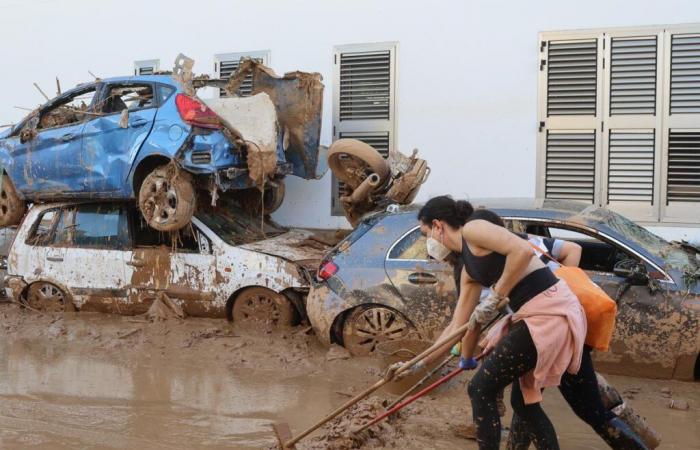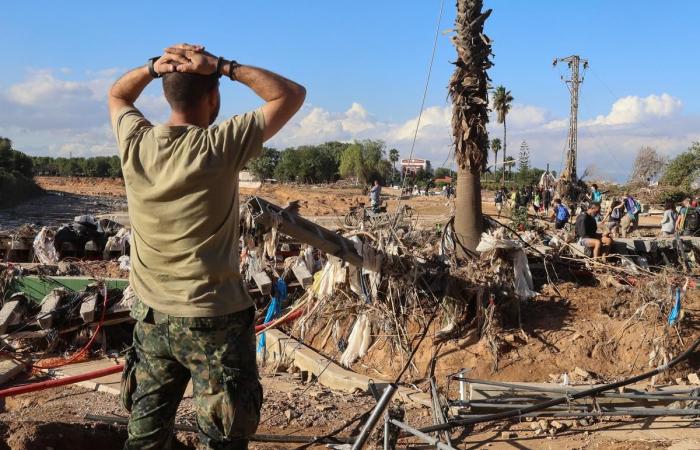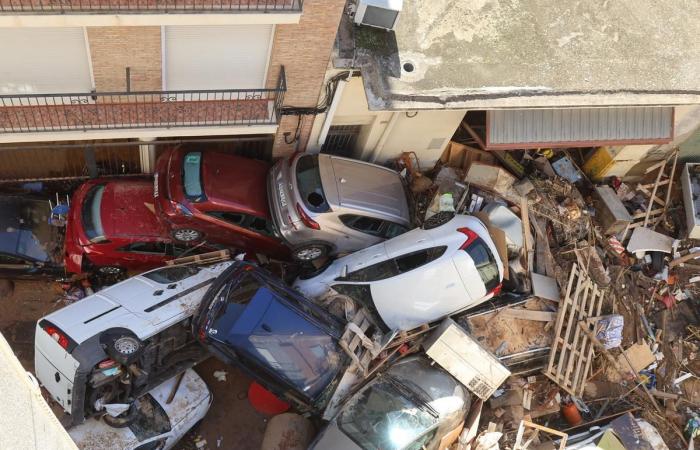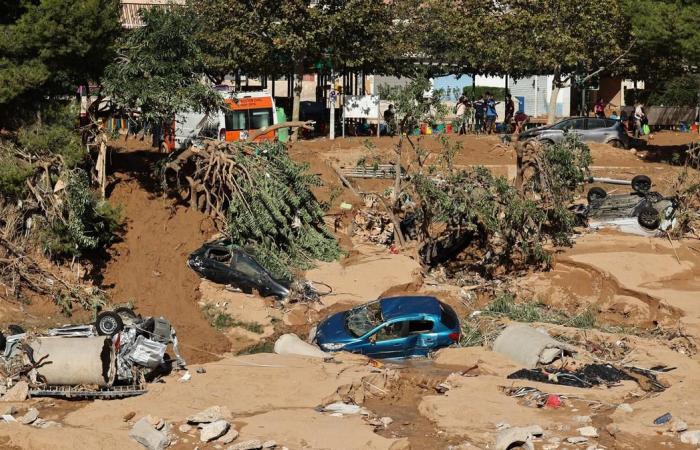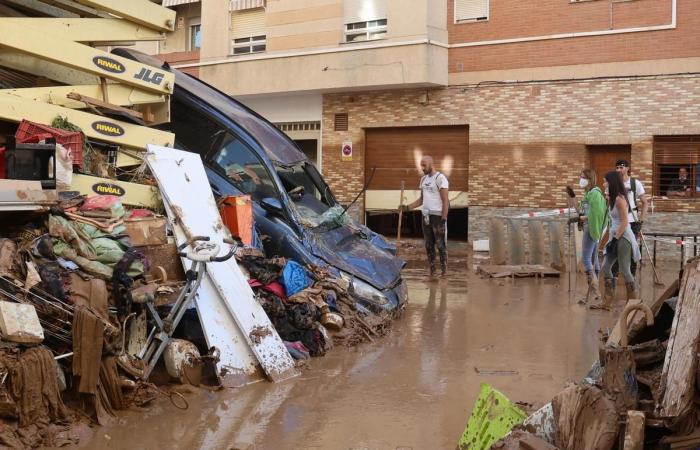« Everything I saw on the Internet moved me so, with my friends, I came to help. » This Saturday, November 2, Rocio, in her twenties, joined the crowd of volunteers who came to lend a hand to those affected by these floods which left more than 200 dead in the Valencia region. Since Wednesday and the discovery of the scale of the disaster, the mobilization has continued to grow. Every day, thousands of Valencians, all in boots and armed with brooms, shovels, spades, rakes and a huge dose of good will, take, on foot, this narrow footbridge which spans the highway and leads to Alfafar , in Benetússer and especially in Paiporta, now a martyr town.
Since Wednesday, thousands of Valencian volunteers have been rushing to help the victims.
Fabien Cottereau / SO
Here, the vast canal, although dug to overcome these phenomena of cold drops, did not resist. It could not contain these exceptional torrential downpours. In a few hours, tons of mixed water and mud surged. Four days later, Paiporta is nothing more than a gaping wound. Even the metro rails were torn up. This is what it costs to be on the front lines. This Saturday, despite the efforts of all these volunteers, from one street to another, the same scenes of chaos are repeated. A tsunami would not have caused less damage. Methodically, these cannibalistic waves devoured every corner of the city with rare voracity.
Fabien Cottereau / SO
In Paiporta, during the night from Tuesday to Wednesday, the water swept away everything. Even the rails of the metro which connects the city to Valencia have been torn up.
Carcasses everywhere
Here, residents can earn the status of castaways. Once the fury has passed, it is now time to move on. Big cleaning. And to this cruel exercise: trying to get his house back. Except that everything has to be thrown away. While there are still nearly 30 centimeters of mud in the streets, they are nothing more than an immense bric-a-brac of furniture, mattresses, clothes, shoes, boards, broken doors, pulverized cars and trucks, turned over, crushed. As in Algemesí, this other affected town 30 kilometers further south, Paiporta is overflowing with carcasses. The tow trucks, which are starting to be able to enter the city, no longer know where to turn.
Fabien Cottereau / SO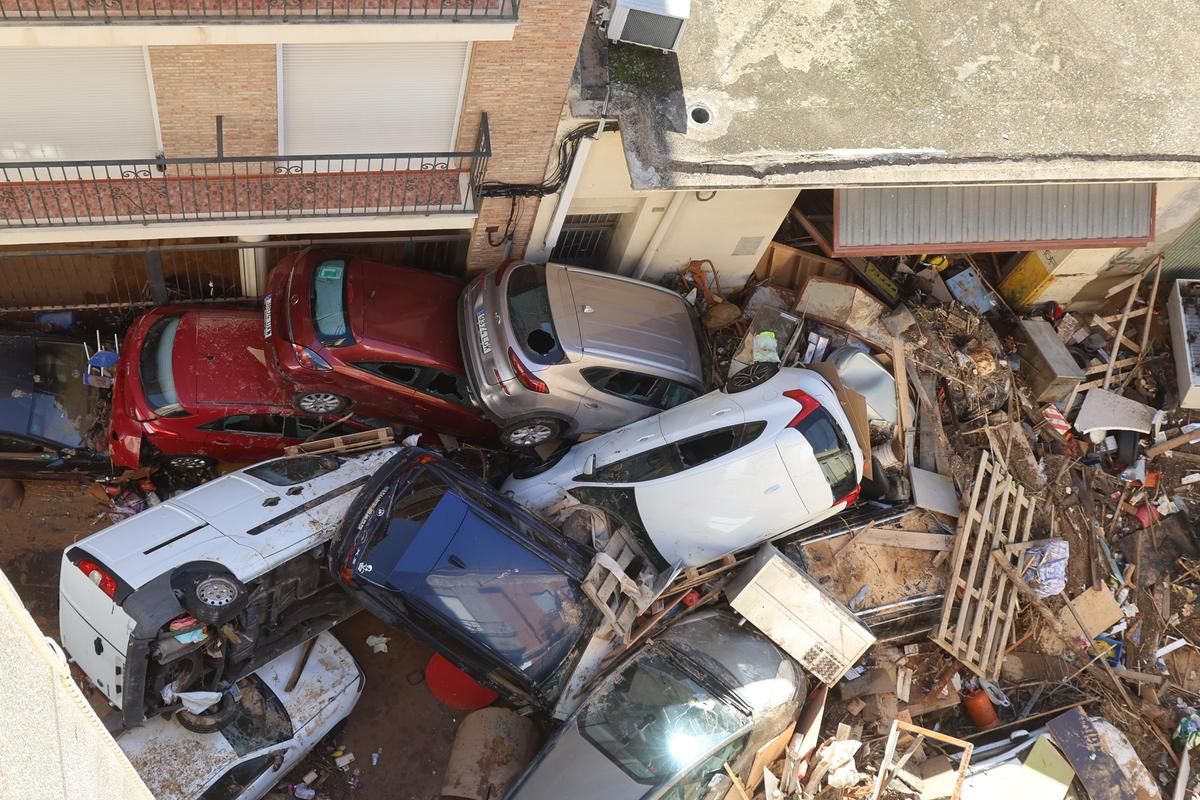
Ausiàs March Street in Benetússer. Around ten vehicles are still stacked on top of each other.
“We lost everything. Even the supporting wall was torn out. I can't believe my eyes”
In places, the water rose to more than 1.80 m, drowning everything in its path. In Primer de Maig street, Nacho, 26, covered up to his ears in mud, is busy in what remains of the family pharmacy. “The curtain and the armored window exploded,” he says. In the room, now empty, traces of mud are close to the ceiling. “We were able to save milk for the children, diapers and some medicines which were sent to the relief center. As for the rest, we lost everything. Even the supporting wall was torn out. I can't believe my eyes. »
“The people will save the people”
So, like everywhere around him, he works to clean this place, to tear this mud from the ground, to push it outside, into this street where the manholes are saturated, where this brown glue never ends. no more stagnating and testing the nerves and morale of those affected. The city center looks like a slimy swamp. Here, one shocking image chases another, as evidenced by this tree stump which swept through this hairdressing salon. One obscenity among many others. There, firefighters are working in the rubble under the watchful eye of the Guardia Civil. The perimeter is cordoned off. Rescuers are looking for a body. Here, a car wreck serves as a dumpster. Before evacuating it, it was loaded with boards, windows… As if thumbing its nose at destiny, the volunteers installed a wooden horse on its roof. To give it momentum…
The only glimmer of hope is the volunteers. They are everywhere. On the footbridge that takes them there every day, they wrote these few words: “El poble salvara el poble”. Or: “The people will save the people”. More than a message. When they are not attacking the mud with their brooms, they distribute water and cakes to the victims. You have to hold on. It is thanks to them that Paiporta did not give up. “I have a lot of friends here,” says Federico, 22 years old. I came to help them, anything we can do is a plus. » Paradoxically, this desolation teems with life.
sheet metal mountain
In Benetússer, a few kilometers on foot from there, the picture is identical. Same causes, same effects. In Ausiàs March street, Ruth has been stuck in her apartment, on the third floor, since Tuesday evening. On her narrow balcony, she can only observe the front door of her building blocked by the pileup of a dozen cars and everything that the waters may have carried away. In this narrow artery, the scene is surreal. And it is this, this mountain of sheet metal, that the volunteers are attacking. Among them, Raul and his friends: “We came from Madrid, Toledo and Barcelona with 4X4s to help clear the streets. I couldn't stand idly by…” Using straps, and despite the mud, they try to remove these carcasses to allow Ruth and her neighbors to get out.
Fabien Cottereau / SO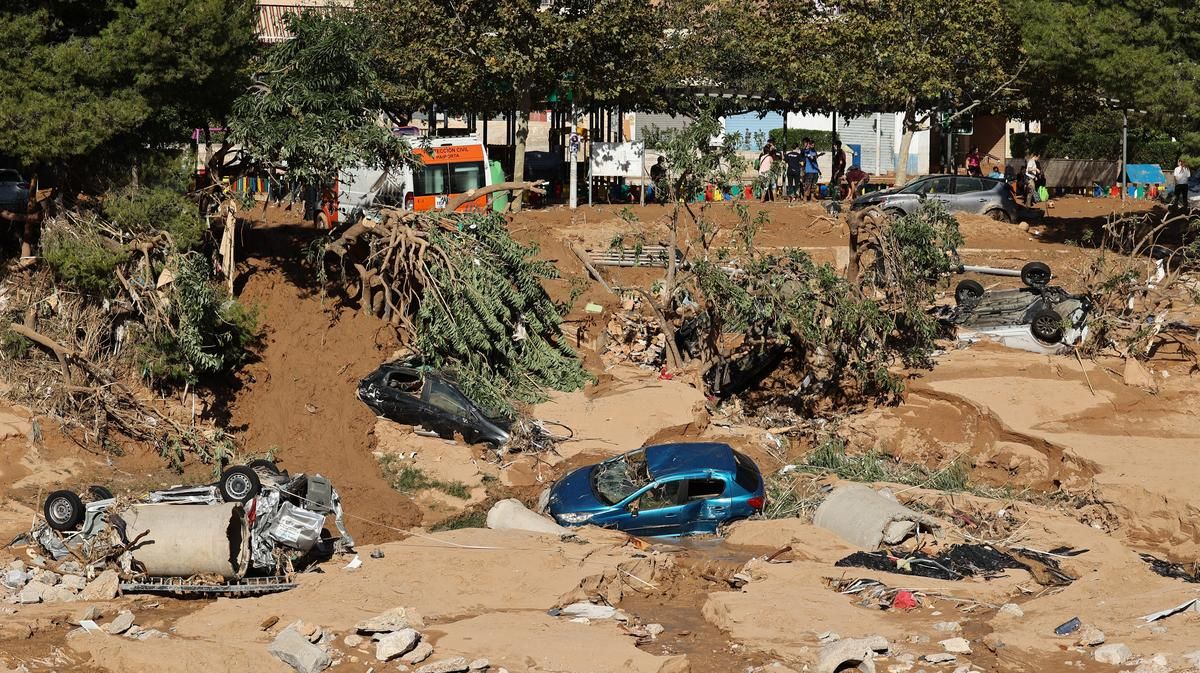
South of Valencia, in Paiporta, the waves swept away everything.
“We are fine. Our only objective now is to go out and help in our turn…”
From the roof of the building opposite, where we were allowed to climb, we can engage in conversation with her. “We are fine,” she said. Our only objective now is to go out and help in our turn…” From our position, on this roof terrace located on the fifth floor, the view is striking. Ruth's street is nothing more than an inextricable tangle of debris. A little further on, a large white sheet was hung at the window: “Tots a una, veu germans vingau, gracias por vuestra ayu da”, it is written. Or: “All together, brothers come, thank you for your help.”
Fabien Cottereau / SO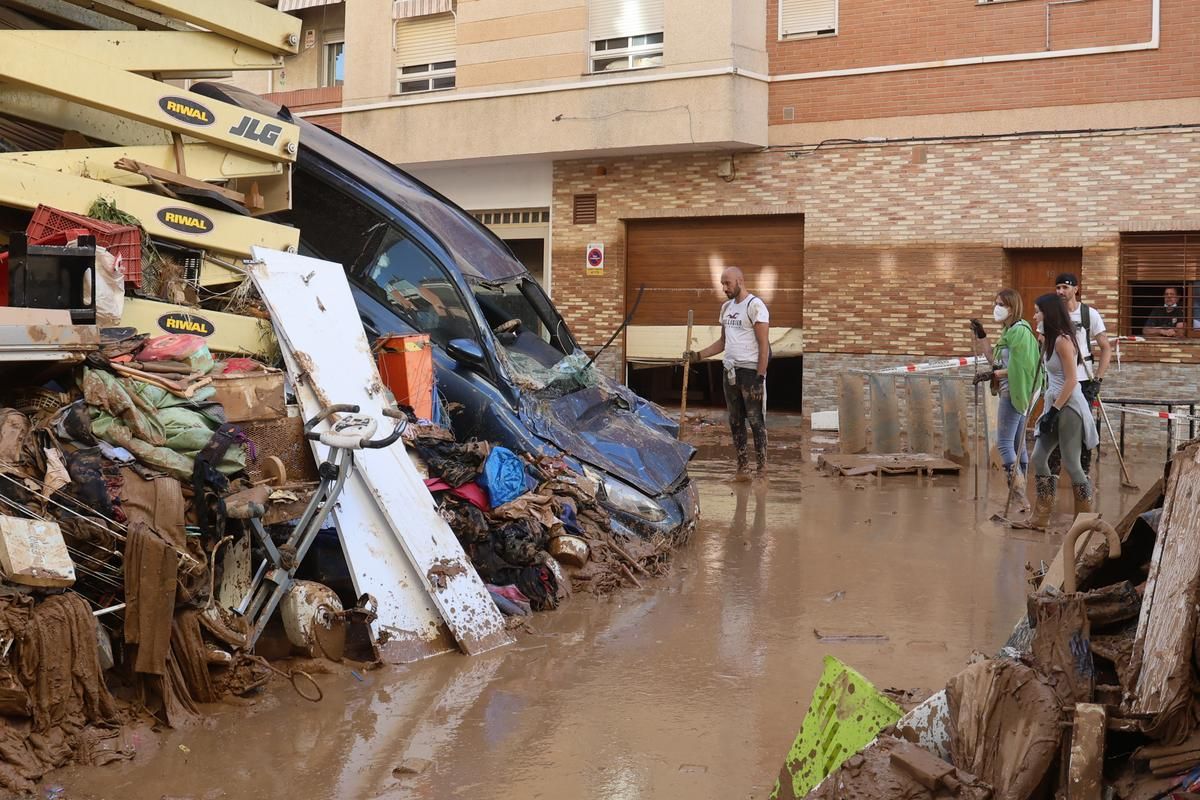
This Saturday, four days after the torrential rains of Tuesday, this is what the town of Paiporta looks like.
In the neighboring town of Alfafar, Alexandro lost his nightclub. One of the walls gave way under the pressure of the water which drowned the establishment. Today, all that remains is the counter, again bathed in a bed of mud, and a gaping opening. “Everything is destroyed,” he says. In the street behind, a boat sits on top of a car… Between the comings and goings of helicopters, the incessant sirens of emergency vehicles and the arrival of the army, the south of Valencia resembles an immense war scene.

